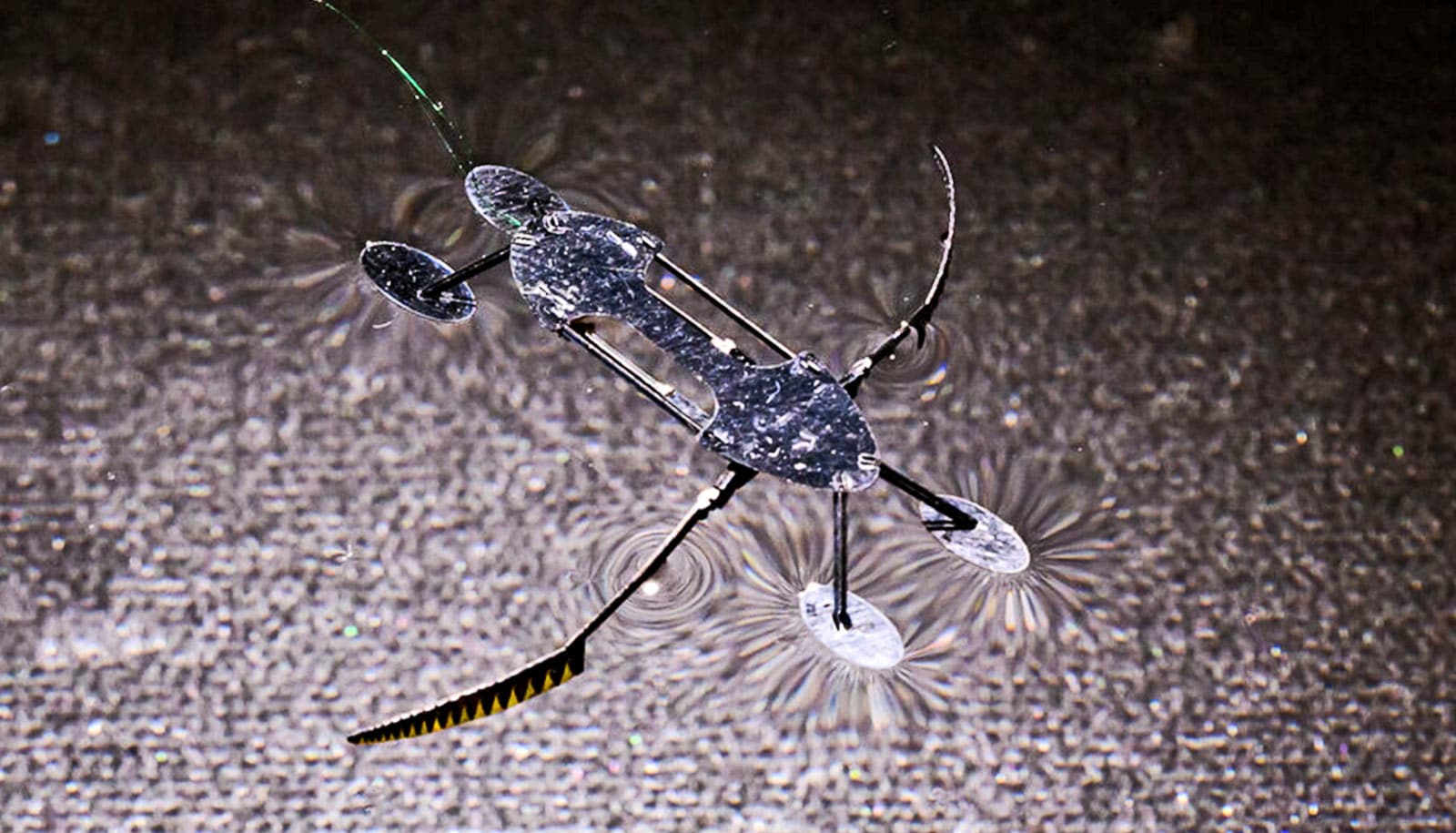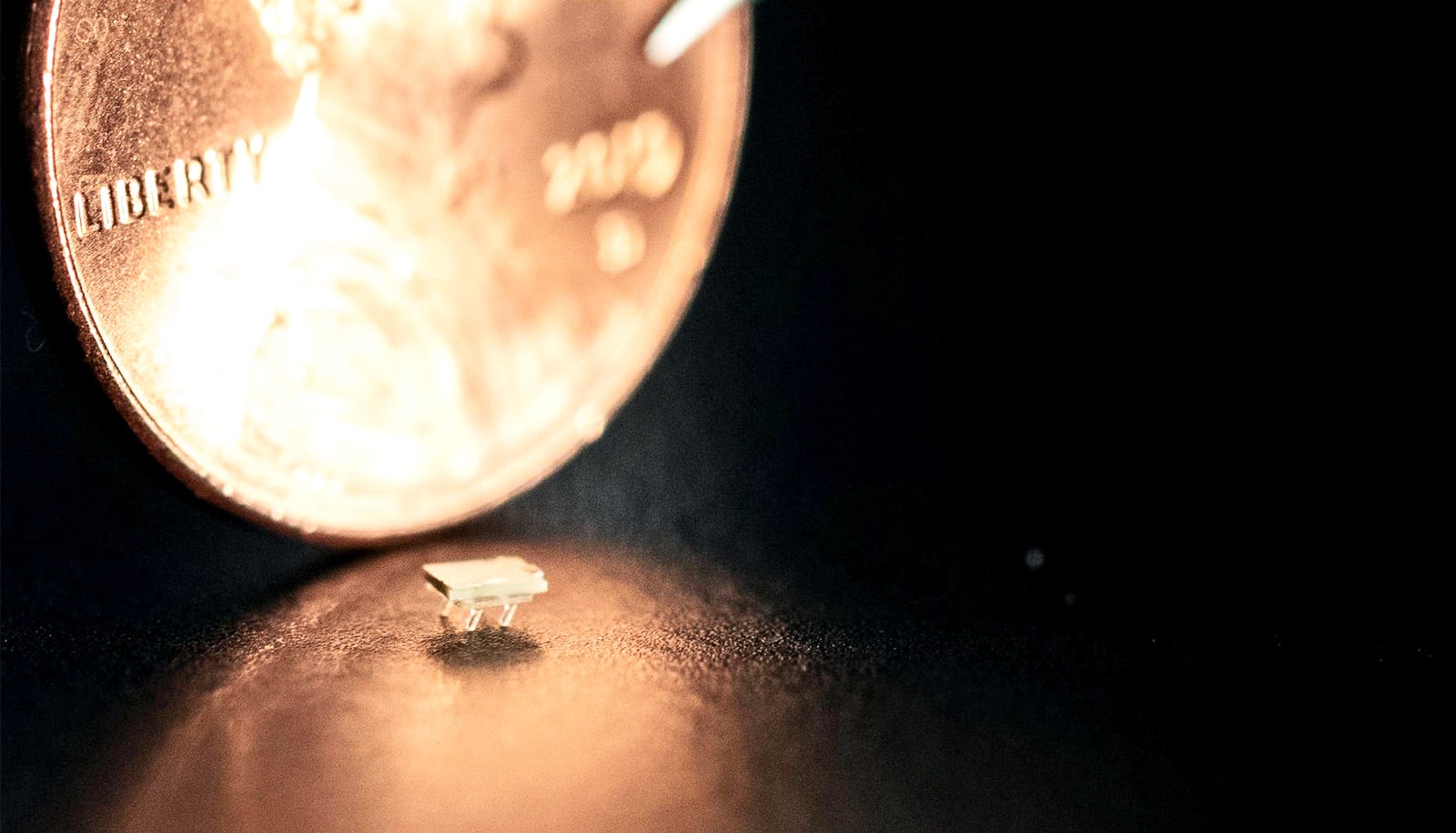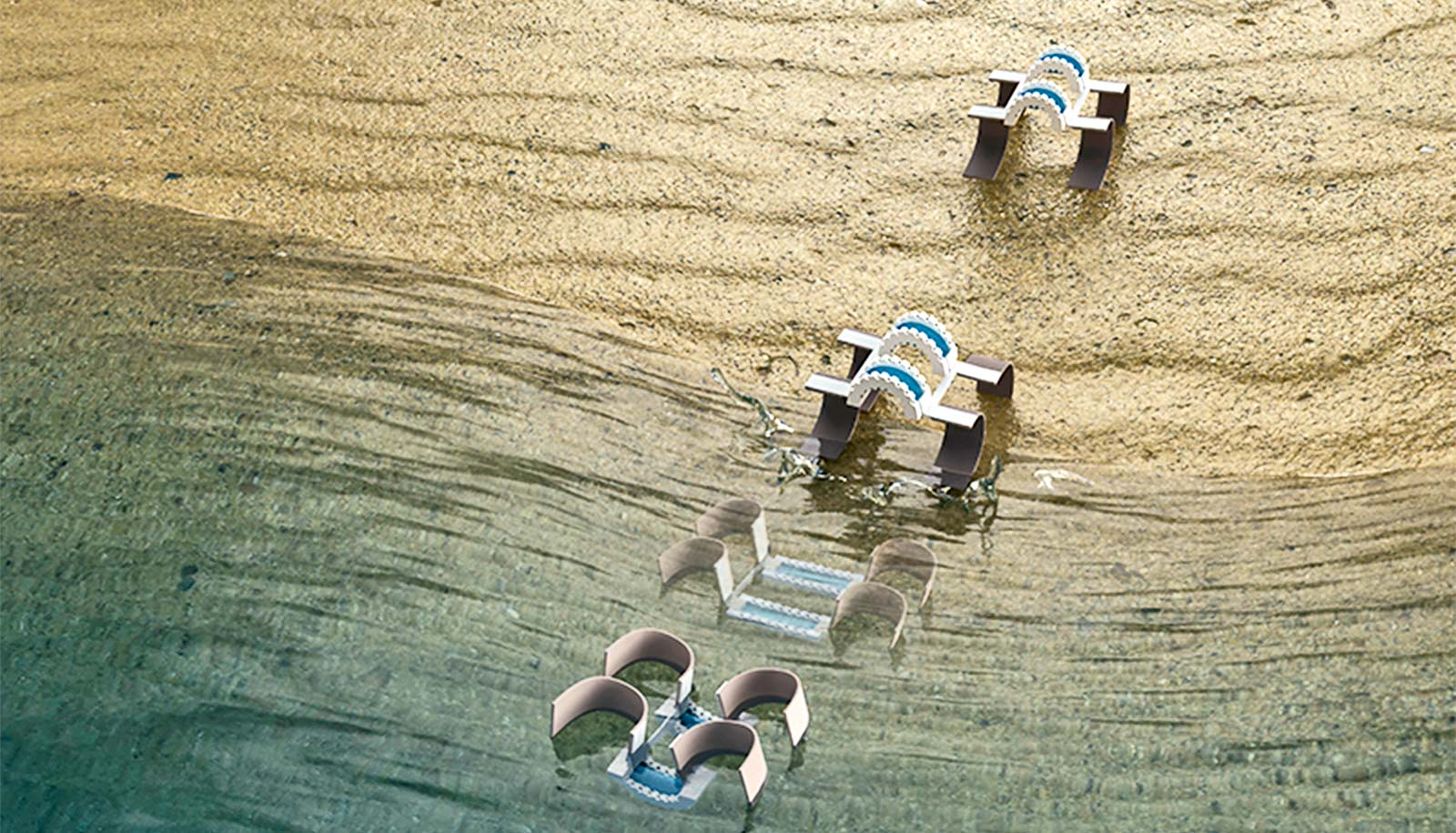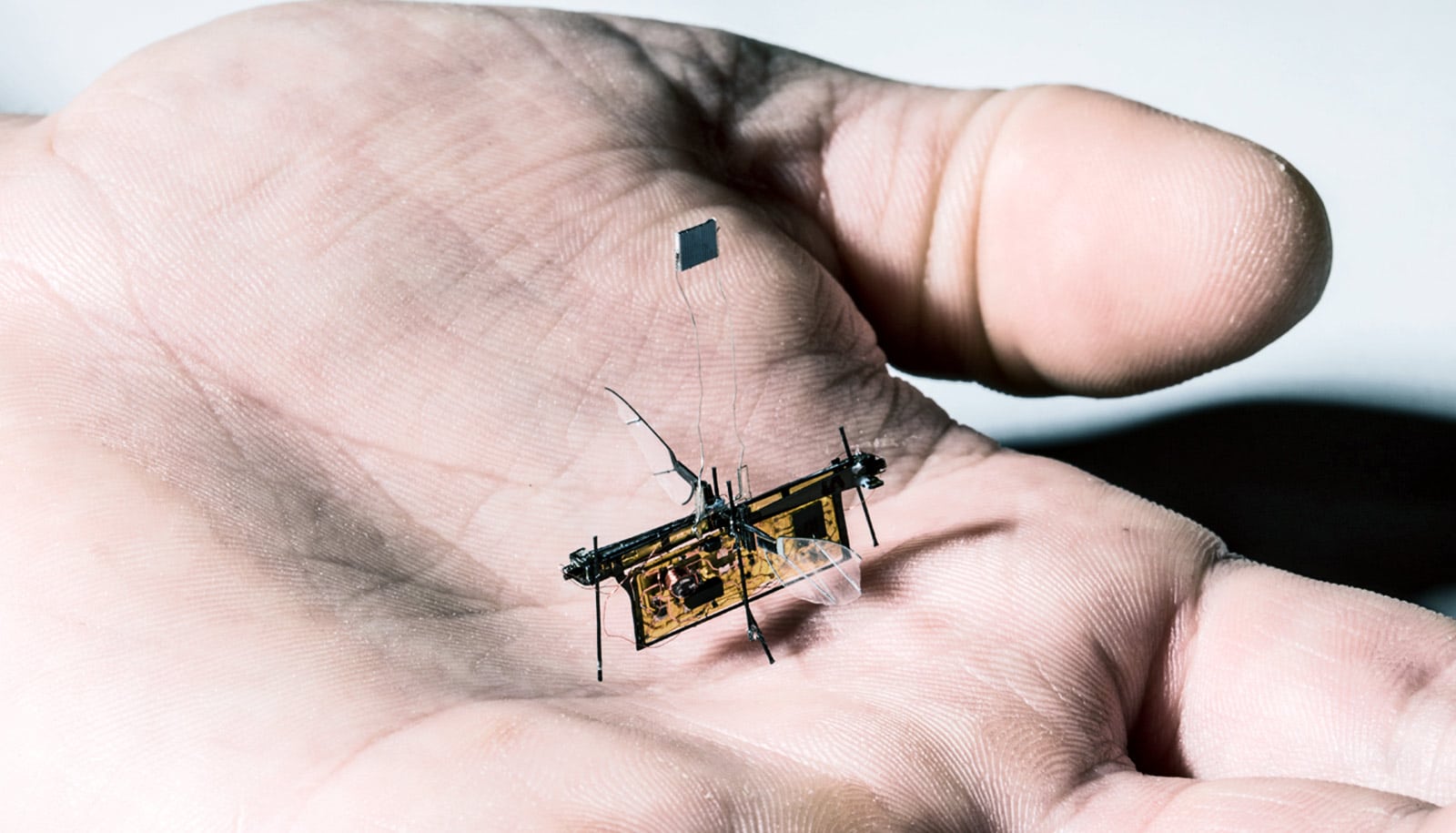Two insect-like robots, a mini-bug and a water strider, are the smallest, lightest, and fastest fully functional micro-robots ever known to be created.
Such miniature robots could someday be used for work in areas such as artificial pollination, search and rescue, environmental monitoring, micro-fabrication, or robotic-assisted surgery.
The mini-bug weighs in at eight milligrams while the water strider weighs 55 milligrams. Both can move at about six millimeters a second.

“That is fast compared to other micro-robots at this scale although it still lags behind their biological relatives,” says Conor Trygstad, a PhD student in the School of Mechanical and Materials Engineering at Washington State University and lead author of the study published in the IEEE Robotics and Automation Society’s International Conference on Intelligent Robots and Systems.
An ant typically weighs up to five milligrams and can move at almost a meter per second.
The key to the tiny robots is their tiny actuators that make the robots move. Trygstad used a new fabrication technique to miniaturize the actuator down to less than a milligram, the smallest ever known to have been made.
“The actuators are the smallest and fastest ever developed for micro-robotics,” says Néstor O. Pérez-Arancibia, associate professor in engineering in the School of Mechanical and Materials Engineering, who led the project.
The actuator uses a material called a shape memory alloy that is able to change shapes when it’s heated. It is called “shape memory” because it remembers and then returns to its original shape. Unlike a typical motor that would move a robot, these alloys don’t have any moving parts or spinning components.
“They’re very mechanically sound,” says Trygstad. “The development of the very lightweight actuator opens up new realms in micro-robotics.”
Shape memory alloys are not generally used for large-scale robotic movement because they are too slow. In the case of the new robots, however, the actuators are made of two tiny shape memory alloy wires that are 1/1000 of an inch in diameter. With a small amount of current, the wires can be heated up and cooled easily, allowing the robots to flap their fins or move their feet at up to 40 times per second. In preliminary tests, the actuator was also able to lift more than 150 times its own weight.
Compared to other technologies used to make robots move, the SMA technology also requires only a very small amount of electricity or heat to make them move.
“The SMA system requires a lot less sophisticated systems to power them,” Trygstad says.
Trygstad, an avid fly fisherman, has long observed water striders and would like to further study their movements. While the water strider robot does a flat flapping motion to move itself, the natural insect does a more efficient rowing motion with its legs, which is one of the reasons that the real thing can move much faster.
The researchers would like to copy another insect and develop a water strider-type robot that can move across the top of the water surface as well as just under it. They are also working to use tiny batteries or catalytic combustion to make their robots fully autonomous and untethered from a power supply.
Source: Washington State



